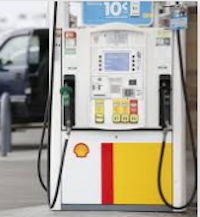The national average for a gallon of gas fell 15 cents since last week to $4.52. The steady decline is due to lower domestic demand for gasoline at the pump and a much lower global price for oil. The cost of a barrel of oil is in the mid-$90s, down from around $110 two weeks ago.
“Global economic headwinds are pushing oil prices lower and less expensive oil leads to lower pump prices,” said Lori Weaver Hawkins, public affairs manager, AAA Blue Grass. “And here at home, people are fueling up less, despite this being the height of the traditional summer driving season. These two key factors are behind the recent drop in pump prices.”
According to new data from the Energy Information Administration (EIA), gas demand dropped from 9.41 million barrels a day to 8.06 million barrels a day last week, while total domestic gas stocks increased by 5.8 million barrels. The decrease in demand and declining oil prices have helped push pump prices down. As these supply/demand dynamics hold, drivers will likely continue to see price relief at the pump.

Monday’s national average of $4.52 is 46 cents less than a month ago but $1.36 more than a year ago.
Kentucky’s gas price average is now at $4.18, which is 19 cents lower on the week, tying for the third largest drop in the week across the nation. Kentucky’s gas price average today puts it within the top 10 least expensive markets in the nation in terms of gas prices. Today’s price is 56 cents lower on the month, but still $1.25 higher than a year ago.
Gas prices in Lexington are averaging $4.35, which is 14 cents lower on the week and 40 cents lower on the month. The average price in Lexington a year ago was $2.93.
The average gas price in Ashland is now $4.47. That’s 12 cents lower than a week ago and 22 cents lower than a month ago. The average price for Ashland a year ago was $2.97.
There are now 34 counties in Kentucky averaging below $4 a gallon. A week ago, only three counties averaged below the $4 mark. The lowest average is in Knox County at $3.69, followed by Hancock County at $3.79. Spencer, Jackson and Simpson counties all follow at $3.82, then Fulton County at $3.83. The county with the highest average is Boyd County at $4.60.
For those planning to travel around the region, the average price for a gallon of unleaded Monday in Ohio is $4.37, West Virginia $4.60, Virginia $4.29, Tennessee $4.10, Indiana $4.58, Illinois $5 and Missouri $4.25.
Travelers planning a road trip to the west or southwest U.S. can expect to see considerably higher gas prices, while those planning a road trip to the southern region of the country will enjoy the lowest prices at the pump. Only nine states in the nation still average at or above $5 a gallon. Illinois is the only state outside of the west/southwest in the continental U.S. still averaging at the $5 mark.
The highest spot in the nation remains California, now at $5,89 after a 19-cent drop on the week, followed by Hawaii at $5.59, which fell only 2 cents on the week. Alaska follows at $5.35.
South Carolina has the lowest gas price average in the nation today, currently at $4.02, while Texas and Georgia follow at $4.03 and Mississippi at $4.04.
The nation’s top 10 largest weekly decreases: Washington, D.C. (−21 cents), Ohio (−20 cents), Texas (−19 cents), Arizona (−19 cents), California (−19 cents), Wisconsin (−19 cents), Oklahoma (−19 cents), Kentucky (−19 cents), Michigan (−18 cents) and Tennessee (−18 cents).
The nation’s top 10 least expensive markets: South Carolina ($4.02), Texas ($4.03), Georgia ($4.03), Mississippi ($4.04), Louisiana ($4.07), Alabama ($4.09), Tennessee ($4.10), Arkansas ($4.11), North Carolina ($4.17) and Kentucky ($4.18).
At the close of Friday’s formal trading session, West Texas Intermediate increased by $1.81 to settle at $97.57. Crude prices increased slightly at the end of the week due to the market expecting crude supply to remain tight throughout summer. The tightening of supply is being driven by the potential for slower economic growth due to rising interest rates and inflation. Declining crude demand, due to reduced economic activity, could lead prices to follow suit. For this week, crude prices could rise if the market continues to believe supply will remain tight. Additionally, EIA reported that total domestic crude stocks increased by 3.3 million bbl to 427.1 million bbl last week, which is nearly 11 million bbl lower than the storage level last year.
AAA Blue Grass

















